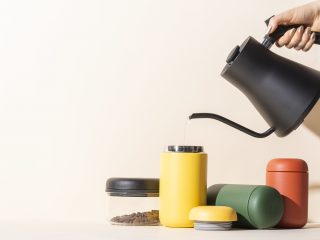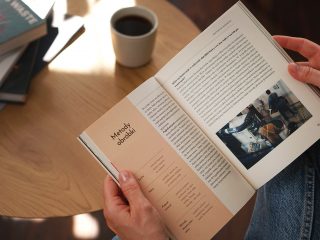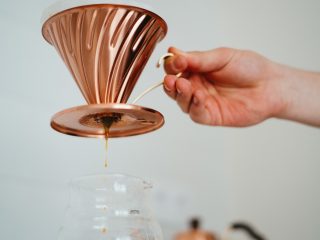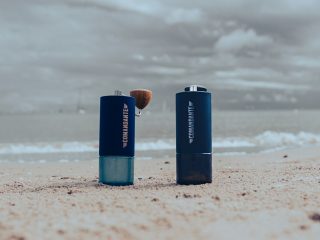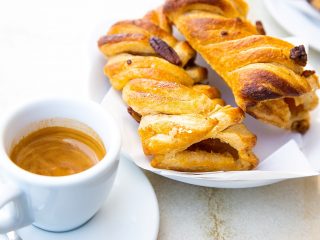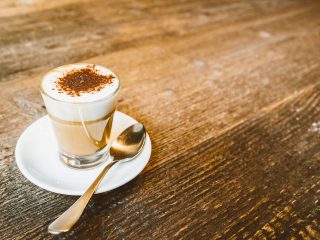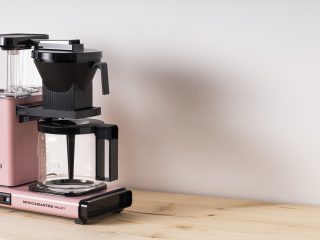Having looked through the window and checked the weather forecast, we can now officially and much to our satisfaction state that summer is here! And it is going to stay with us for the weeks to come. For coffee lovers, it’s a wonderful opportunity to try out dozens of recipes and grounds in the form of a cold brew.
How to make cold brew easily?
When it comes to cold brew, we don’t deal with brewing, but maceration. This is a process producing similar results to brewing, but taking place at much lower temperatures and needing way more time. To make this coffee at home in the simplest way possible, you don’t need any fancy gear. A jar, grinder and good coffee is all you really need. And after the maceration part, you can use a simple dripper or a similar device to filter the macerated coffee.
Instead of them, however, you can use dedicated appliances which will make the whole process a lot easier. In this category, Hario is the front runner with my personal favourite Hario Mizudashi Coffee Pot on top. A built-in ultra-fine filter will help you make great cold coffee easily, hygienically and with pleasure!

Drink it the way you like it!
Cold brew is one of the most universal coffee brews. Due to only two ingredients, one of which (water) has no taste of its own, we can regulate everything by means of changing the grounds. Their origin, roast level but also ratios we are going to use will guarantee a wide array of flavours.
Case no. 1: ‘’But I like iced tea!’’
Don’t worry, we haven’t changed the topic and we are not talking about (extremely tasty, btw) cold brewed tea. We are introducing the first cold brew variety which you can fall in love with. Ethiopian washed coffees often have notes of black tea in their taste profile. Black tea, Earl Grey, Sencha green tea or white tea perhaps? You can find many of those in coffee grounds. Ethiopian coffee in cold brew can taste just like good iced tea with jasmine and citrus fruits!
For the first maceration, I recommend a finer than average grind and a lower coffee to water ratio: 5.5-6g/100ml. As a result, your coffee will be silky smooth and well macerated at the same time.
Case no. 2: ‘In summer, I drink only fresh fruit juices!’
If you hear a friend of yours say things like that, cover their eyes with a blindfold and let them taste a naturally-processed cold-brewed Ethiopian or a washed cold-brewed Kenyan coffee. For those who love acidity or very fruity sweetness, this is the easiest way to refresh yourself. In the former, you will find some acidity accompanied by a great deal of sweetness, most often tasting of berries, raspberries, strawberries or exotic fruits. The latter fresh and refreshing coffee, Kenya, is easiest to describe with a colour, because it’s manifestly red. Cherries, red currants, blood oranges, grapefruit, citrus fruits: this is what Tiggers like best!
To make your cold brew from this sort of coffees even juicier, I recommend a slightly finer grind – the way we did for the washed Ethiopian coffee – and slightly higher coffee to water ratios: 6.5-7g/100ml. This will make for a juicier coffee and provided that we grind finer, the extraction will still be adequate.
Case no. 3: ‘Black coffee? YUCK!’
Milk coffee is still one of the most popular brews sold at coffee shops. In summer, though, it is more and more often replaced by coffee with tonic or by the cold brew in question. But what should you do when you have no professional espresso machine at home?
A Moka pot would surely raise the temperature in the kitchen, whereas what we need is a milky caffeine kick… Put intensely roasted coffee grounds in a jar and let them sit overnight; cold brew made with espresso grounds will make your dreams come true! Owing to the darker roast, the most classic Brazilian or the more fruity Ethiopian coffees won’t ‘disappear’ in the milk. Quite on the contrary, when you keep the adequate ratio by pouring from 20 to 50ml of milk into the glass, their assets will strike you even more!
How to make such cold brew? Grind the coffee not so fine as in the case of Ethiopian or Kenyan coffee and use the classic ratio of 6 grams of coffee to 100 millilitres of water. A darker roast makes it much easier to extract flavours and aromas which are of interest to us. There is, however, a risk involved: our coffee can have a very bitter taste if we grind it too fine.
Case no. 4: ‘Give me simply cold black coffee!’
If you are one of those who don’t fancy a fruit juice, tea or milky-nutty refreshing brew in their cup, this paragraph is for you! By using light roasts from Central and South America we will produce a rather classic brew, full of nuts, milk chocolate or less sour fruits, which will satisfy all coffee lovers. Before letting coffee grounds sit in cold water overnight, check out the label on your grounds. If the flavour notes given by the roasteries are too fruity for your liking, opting for maceration only and using it instead of hot water probably won’t hide them.
However, if you grind finer and use a slightly higher coffee to water ratio, such as 6.5-7 grams to 100 millilitres of water, your cup will contain a cool, highly concentrated brew with a less complex but more intense taste.
A never ending story.
The number of coffees and parameters to apply to your infusions is infinite. Nothing can stop your from having in your refrigerator this summer a number of bottles of cold brew, each with their own unique taste! Drink, try, find your favourites. As for the abundance of coffees on the shelf and the best coffee accessories, these will be taken care of by your always and forever – Coffeedesk.

